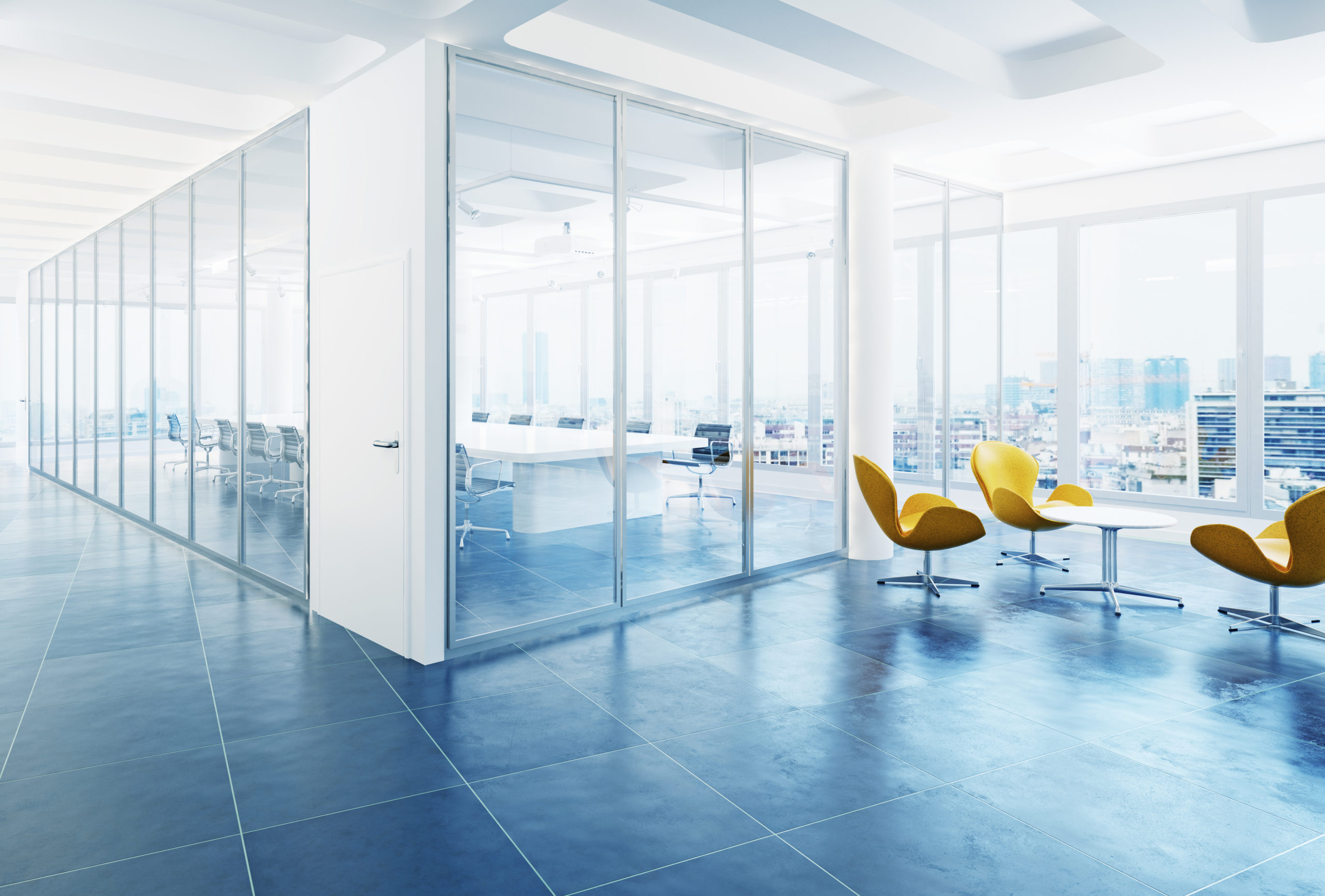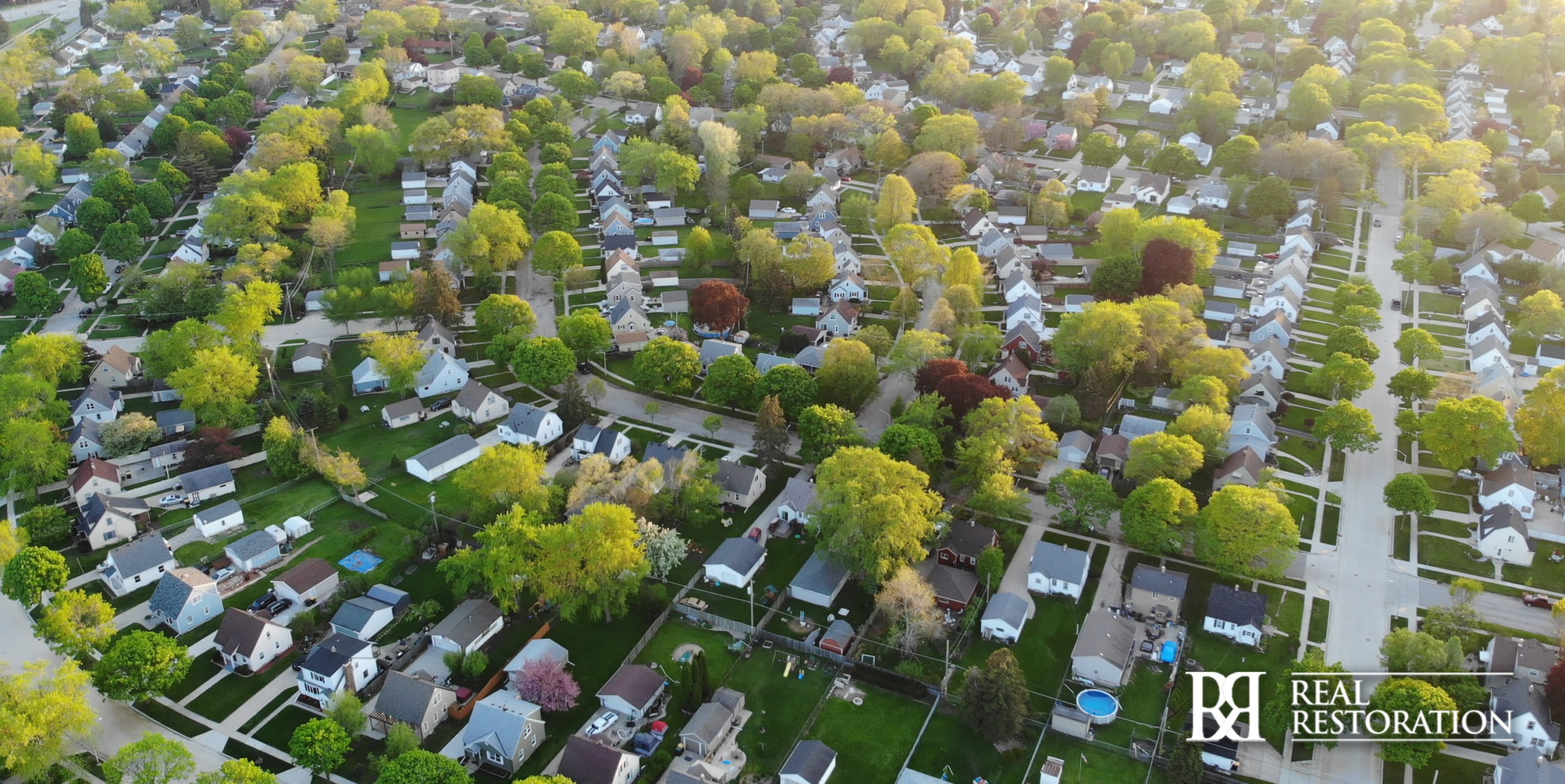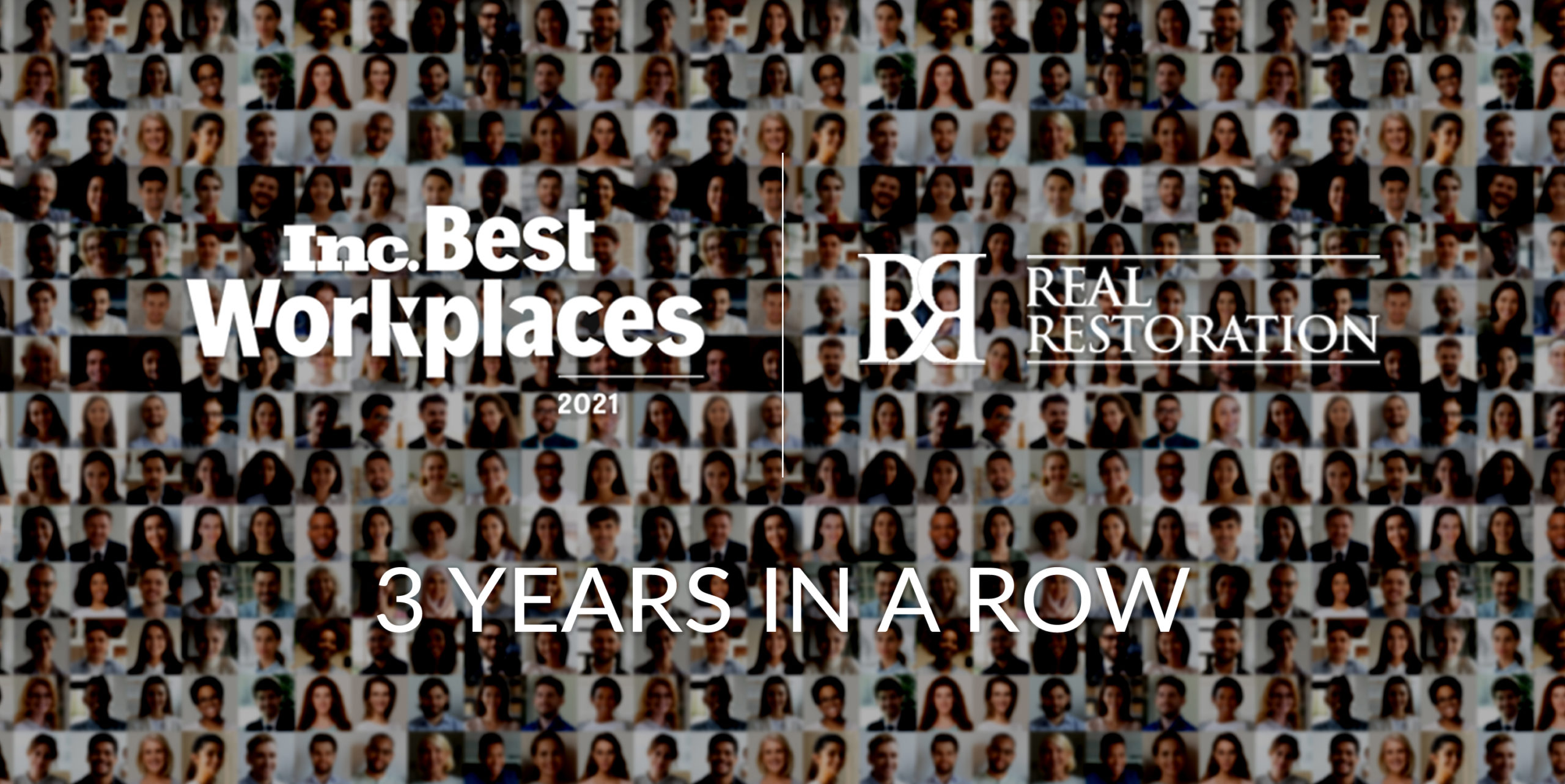
Chicago Roundtable on Workplace Re-occupancy
For owners, Landlords and Tenants

This article was originally published by Crain’s Chicago Business: https://www.chicagobusiness.com/crains-content-studio/roundtable-workplace-re-occupancy
It’s been said that the road to workplace re-occupancy is paved with technology and common sense. Indeed, as organizations plan for a post-pandemic world, the workplace may be the first line of defense in preventing disease transmission. Three Chicago-based experts involved with workplace re-occupancy shared their insights and challenges with Crain’s Content Studio.
How is your organization involved with workplace re-occupancy?
Morris Gershengorin: We design and construct office spaces. The pandemic has compelled us to prepare and adapt our service offerings and capabilities to meet the demand for office modifications to facilitate workplace re-occupancy and ensure that future projects meet new design and construction standards.
Andy Holub: Clune is focused on quick, cost effective, impactful changes to our clients’ environments to help their peace of mind about re-occupancy. We’ve been working closely with our partners in the CRE industry to implement solutions to help employees feel confident about returning to the office. For example, we’ve installed touchless faucets and soap dispensers in kitchens and bathrooms, installed door hardware in highly touched areas that inhibits the growth of bacteria, and replaced laminate with surfaces that are easier to disinfect.
Julie Lardenoit: ESD has been working closely with building owners, operators and occupiers throughout Chicago and the country to foster confidence that the workplace is as safe as it can be. We’ve done this by deploying wellness assessments and helping building engineers maximize equipment operations and filtration potential in existing air handling systems. Indoor air quality and the general health of buildings are at the center of discussions on how to mitigate disease transmission as people start returning to work. We understand that the health of buildings and response to this pandemic extend far beyond indoor air quality. We’ve been leveraging technology and smart building applications, helping clients deploy frictionless entryways to minimize surface contact. By designing robust wireless networks, we’re deploying ways for tenants to be more flexible in where they work—allowing for better work experiences while operating within CDC guidelines for social distancing and general healthy behaviors.
Please describe a current or recently completed project that illustrates your company’s experience in return to office/re-occupancy.
Gershengorin: We recently completed a duplex office concept in Chicago’s Bucktown neighborhood. We worked with the architects and designers to help the owners reformat the space to provide ample distancing for everyone during work hours. This included redesigning the employee lounge, common and dining areas. We also introduced natural light and air to the lower levels that traditionally would not receive such attention.
Lardenoit: We’re currently working with an international company that was looking for opportunities to go above and beyond CDC and industry recommendations with respect to indoor air quality for their employees. They have a genuine interest in making their employees feel more confident about returning to the office by investing in technologies that have a positive impact on indoor air quality. We reviewed their buildings and made both short- and long-term recommendations. We’re providing HEPA spot filtration units in higher-density areas and implementing bipolar ionization technology within their tenant spaces. There was a question related to plexiglass partitioning to provide additional protection. As engineers, we know that additional partitions can have a negative impact on ventilation effectiveness and impact how contaminants are removed from the space. We’re currently performing simulations to determine if providing these partitions will result in more harm than good.
Holub We recently completed a refresh for a national client, adding hands-free operations—door operators, faucets, etc.—to minimize touch points and creating divisible spaces with dividers and screens in congested areas. We also installed a significant amount of wayfinding and instructional signage, and crafted additional smaller phone rooms to give employees a more comfortable environment.
In recent months, have you seen an uptick in the demand for re-occupancy solutions?
Lardenoit: We’ve seen an increase in recent months with tenants looking to reoccupy by early fall. In the beginning of the pandemic, we were hearing more from owners and operators who were exploring options for building operations during the pandemic, as well as positioning their buildings for the future. More recently, we’ve been hearing more from building tenants. It’s been a wide range of clients, from not-for-profits occupying less than a floor to global clients looking to assess their portfolio of buildings nationally and internationally. Tenants are looking for opportunities that can be implemented within their existing systems to make their employees feel more comfortable returning to the office. They’re looking to go above and beyond CDC and industry recommendations to accomplish that.
Gershengorin: Over the past few months there’s been much interest in planning re-occupancy and the solutions that go along with that process. While demand can be characterized as increasing, organizations have so far remained hesitant to begin preparing. With the vaccine rollout gaining momentum, we’re anticipating a noticeable increase in demand for re-occupancy solutions in the second quarter of this year and beyond.
Holub There’s a considerable amount of planning happening right now. We’re seeing budgeting, bidding and other conversations that weren’t happening late last year. Now that the vaccination process is in full effect and we’ve been working remotely for a year, it feels like clients are becoming more comfortable with the possibility of reopening. They’re now telling us what it will take to bring them back to the office in a safe and cost-effective manner.

What’s the number one concern you’re hearing from your clients on this topic?
Holub I’d say the biggest concern is committing to long-term agreements in a still-uncertain world. We’ve learned a lot about our wants and needs over the past year. However, I think a lot of our clients are still determining when, where and how they want to move forward. Many clients don’t yet know how to plan in the long term. They’re still determining how much square footage they want to hold onto, and how remote working will impact the amount of space they need.
Lardenoit: Clients want to make their employees feel comfortable getting back to the office. Most people feel that while they were efficient enough and they were productive enough, they miss collaborating with their team and want to maintain company culture. They want to embrace a hybrid model to get people back as quickly and safely as possible.
Gershengorin: The number one concern is the unknown nature of re-occupancy. While vaccine optimism seems to be increasing, the potential of a resurgence in cases, COVID-19 variants and the possibility of a resulting lockdown creates uncertainty.
What are some trends you’re seeing as owners and operators position their buildings for re-occupancy?
Holub Again, touch free environments, elevated cleaning schedules, improved signage and return to work programs outlining how you should operate when you return.
Gershengorin: While the majority of owners and operators are prioritizing decontamination and disinfection, they understand that a successful return will also rely on addressing individual and group behaviors as well as workplace culture. That being said, first and foremost owners and operators are focusing on recalibrating and improving building systems, instituting new processes and protocols, spatial modifications and reconsidering materiality, to name a few.
Lardenoit: We’ve seen an increase in opportunities related to building amenity spaces like conference areas, game rooms and lobby upgrades. Owners and operators are taking advantage of under-occupied buildings to make improvements to attract and retain their tenants and get employees excited about returning to life in the office again. We’ve also seen a steady increase in spec suites and turnkey offices. As tenants explore reducing their direct-office footprint, there are opportunities to convert these spaces to smaller offices where organizations can lease a space that, for the most part, is ready to go.
What solutions and technologies are you implementing for your clients?
Gershengorin: In office buildings and other commercial properties, we’re implementing a variety of solutions and technologies such as HVAC system upgrades, “no-touch” building engagement systems, strategic material selection in construction, and where possible, replacing materials with antimicrobial alternatives to promote a highly cleanable space without compromising aesthetics.
Lardenoit: The focus has been on improvements to indoor air quality, health and wellness, and touchless technology. We partnered with two firms—Cohesion and Riverside Investment & Development—to implement a comprehensive indoor air quality improvement and monitoring program with bipolar ionization technology and carbon dioxide monitors. The program allows occupants to understand the air quality within their spaces from their phones. I think that moving forward, people will want to know about the quality of air they’re breathing, so we expect this technology to be widely adapted. We’re also looking into how we can put existing technology within spaces to new uses—for example, using sensors in lighting fixtures to track occupancy density.
Holub: Even after the pandemic is behind us, working remotely will be here to stay. As a result, we’re seeing a greater need for smaller work rooms with enhanced technology. However, collaboration is still vital to the success and overall culture of a business. We’re working to identify solutions that will augment employees’ experience so collaboration isn’t lost with changes in workstyle.
How can building owners offset the costs associated with these types of improvements?
Lardenoit: The Qualified Improvement Property Program—part of the CARES Act—allows 100 percent of hard and soft costs of any qualifying interior improvement to receive an immediate tax deduction. Improvements that can be included as part of this program include filter upgrades, ultraviolet germicidal irradiation, bipolar ionization systems, touchless technologies and upgrades to building automation systems.
Gershengorin: Owners should start by creating a phased reinvestment plan that includes both operational costs and expenses associated with new higher standards of building safety and cleanliness to allow a return to “business as usual.” One of the simplest ways to offset costs is by standardizing a building’s tech infrastructure and adapting to new innovations in technology and automation. These tools also provide critical data and analytics that are invaluable when determining future investment in tenant improvement.
Holub Building owners need to start communicating with their tenants and the public about the improvements they’re making to create safe workspaces. They should communicate modifications, building updates, schedule changes and more. Clients need to know they’re investing in clean and secure strategies to bring everyone back to the office safely.
In what ways has the pandemic changed office design and construction?
Holub There’s currently a lot less opportunity and a lot more competition. Margins are tighter and the process is slower. In addition, there are many things that weren’t thought about before that now need to be considered. For example, the extra time it takes to transport workers on a jobsite via elevator due to social distancing guidelines must now be worked into a project schedule. Also, social distancing has changed how certain tasks are performed. Jobs that were once performed by two people in close proximity must now be accomplished individually. These changes have challenged us to be more thoughtful, and to think through every single step we take on a jobsite, so we all go home healthy at the end of the day.
Lardenoit: Organizations are looking for flexible spaces. A lot of studies indicate that yes, people miss the office, but they don’t miss it five days a week. For a distributed work model to make sense, it will need a well-thought-out hoteling strategy to allow flexibility to expand without the corresponding, traditional square-foot-per-person ratio increases in real estate. Organizations are currently exploring how to make their spaces desirable to support culture, collaboration and innovation. Many are creating more “we” space versus “me” space. Some are reimagining their open-office strategies to promote inclusivity and create a space where people want to be. Some are augmenting their space strategy with building amenity spaces. And after years of densification, I think we’ll start seeing people spread out a bit more.
Gershengorin: The future of office construction and design will need to provide for maximum social distancing, touch-free operation, and air and surface sanitization. The concept of open space modularity plays a large role in this ongoing discussion. Outdoor spaces will be leveraged to provide dynamic flex areas for occupants. Flexible infrastructure will need to be a foundational design and construction principle.
What post-pandemic construction and design standards will be the most difficult to adapt to and why?
Holub The designers’ biggest challenges will come when they begin programming with their clients. We’re starting to see a light at the end of the tunnel, but it’s still not clear when this will end. So, designers will need to rethink spatial standards that have been practiced for decades. In construction, the challenge will most likely be with the supply chain. Expectations are roughly the same as they were a year ago. However, projects just won’t move as fast as they have in the past. We need to be vigilant in our material tracking, scheduling challenges, and most importantly, communicating these challenges to clients.
Gershengorin: Many of our hospitality clients are positioning their spaces to have more operable windows and outside areas. This has obviously been a challenge with existing space, so adapting our team to the new structure and processes will continue to be a driving force as we look ahead.
Lardenoit: We haven’t seen any code updates related to the pandemic thus far. The primary focus on indoor air quality has been outdoor air and filtration. While we used to think of MERV 13 filters as the Cadillac of air filters for the commercial building industry, most buildings have been able to accommodate the upgrade. As it is, Chicago building codes require more outdoor air than industry standards specify. The other aspect of indoor air quality is humidity. We know there’s a link between low humidity and occupant health within a building. There are currently no codes or standards that require lower limits of humidity in commercial office spaces. Unfortunately, if a standard were introduced, it would be very challenging, if not impossible, to implement. Most commercial buildings are not designed to accommodate humidification systems.
Looking ahead, how will buildings and landlords likely evolve to attract and retain tenants?
Lardenoit: I think it will be a combination of things. We’ve seen an increase in opportunities for building amenities. While amenities have always been a big attraction for tenants, I think organizations are looking for ways to entice their employees back to the office. Flexibility with respect to lease durations may become more important as organizations realize how quickly situations can change. Health care as an amenity within buildings is something we’re starting to see and we expect this to continue and increase.
Holub I suspect WELL certifications, which verify human health and wellness in buildings, will rise over the next few years. Promoting a healthy environment is key to attracting tenants. Building amenities will also adapt to our current environment. For example, the traditional cafeteria will evolve from sit-down to grab-and-go. Fitness centers will have robust scheduling applications to avoid overcrowded spaces. I also suspect we’ll see solutions introduced that will limit or control on how many people can occupy a space.
How can landlords and tenants alike plan for a smooth transition back to the office?
Lardenoit: We’re advising owners to spend some time examining the efficiency of their building’s equipment and systems. Buildings have been very underutilized for over a year. We wouldn’t take our car on a long road trip after it sat idle in our garage for over a year without first taking it for service. We can’t expect our buildings to be ready to go without a little TLC. For tenants, constant communication with landlords about plans and questions regarding indoor air quality, health and wellness initiatives, and technology implemented over the past year can be part of a company’s due diligence. Tenants really want transparency and communication. For example, ESD is a tenant at Willis Tower. We receive regular updates on infections and cleaning protocols, and Willis Tower has hosted virtual building-wide educational presentations. As a result, we as tenants feel like the building owners are doing everything in their power to keep us safe and informed.
Holub Success will come from a good strategy—dip your toes in the water before you dive in. At Clune, we were successful because we set up and implemented a plan that worked, including leaving the decision about whether to come into the office to the individual employee. As we learned more, we adapted our plan. We also asked ourselves and our peers to stick to the plan until we know this is over. It really comes down to landlords taking the steps to assure tenants that the building has been modified to follow CDC social distancing guidelines. Once a landlord is effective in selling its tenants on the modifications of the building, it becomes the tenant’s responsibility to take similar steps in their office space. Once this is accomplished, they need to communicate how the changes affect the day-to-day work life of their employees.
ABOUT THE PANELISTS
Morris Gershengorin
312-265-4668
MORRIS GERSHENGORIN is CEO of Real Restoration Group, a full-service, Chicago-based firm with decades of experience in all aspects of construction and restoration. He has a track record of success for meeting and exceeding clients’ expectations, and has been recognized for his work developing multifamily buildings and restoring properties across a wide variety of asset classes. He has spearheaded numerous emergency-relief projects and supports various charities, including the Friends of Refugees of Eastern Europe, where he serves as a board member.
Andy Holub
ANDY HOLUB is a vice president and director at Clune Construction, an employee-owned general contractor with more than 600 professionals in five offices across the United States. With 23 years of experience in the industry, he leads a team that is responsible for all aspects of the pre-construction process, and he also oversees the company’s self-perform group and service division. He holds a bachelor’s degree in architectural studies from the University of Illinois Urbana-Champaign and an OSHA 30-hour certification.

Julie Lardenoit
JULIE LARDENOIT is a practice leader at ESD (Environmental Systems Design, Inc.), a Chicago-based global consulting engineering firm focused on the delivery of high-performance buildings. A 20-year veteran of the firm, she opened and led its office in Abu Dhabi, returning to Chicago in 2018 to lead its growth with national companies seeking to implement standards across national and international real estate portfolios. She holds a bachelor’s degree in mechanical engineering from the University of Michigan and is on the board of the International Women’s Forum.
This article was originally published by Crain’s Chicago Business: https://www.chicagobusiness.com/crains-content-studio/roundtable-workplace-re-occupancy


![[Live] CEO Morris Gershengorin Talks #RealRestorationMiami with David Goldberg 7 MIAMI RR INTERVIEW THUMBNAIL](https://realrestoration.com/wp-content/uploads/2021/05/MIAMI_RR_INTERVIEW_THUMBNAIL.jpg)

